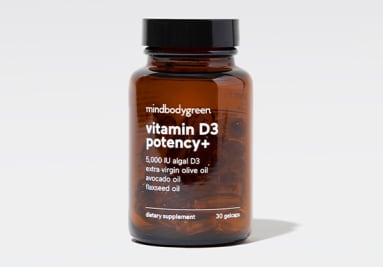
Image by Addictive Creatives / Stocksy
May 25, 2023
Our editors have independently chosen the products listed on this page. If you purchase something mentioned in this article, we may
For many people, the transition from winter to summer is rejuvenating. But for others, summer can be a difficult season marked by feelings of depression and irritability. For people whose seasonal depression hits like clockwork each summer, the long, hot days of sunshine and social obligations can be more like a cage than a carnival.
Advertisement
This ad is displayed using third party content and we do not control its accessibility features.
What is summer SAD?
The seasons, particularly summer and winter, can be challenging times for people, according to Norman Rosenthal, MD, a psychiatrist and researcher who led the team that discovered Seasonal Affective Disorder (SAD, for short). Rosenthal is also the author of Defeating SAD (Seasonal Affective Disorder): A Guide to Health and Happiness Through All Seasons, which comes out in August.
Some people find themselves feeling depressed in winter, often due to a lack of sunlight during shorter days, but others feel depressed, irritable, and agitated in summer, Rosenthal says.
When Rosenthal began researching Seasonal Affective Disorder in the 1980s, he was initially focused on people who suffered during winters. But after hearing from many people who felt “the exact opposite,” of winter SAD, his team started researching summer SAD, too.
For people with summer SAD, feelings of depression and agitation begin to set in when it’s hot out, in May or June, and continue until the weather breaks around mid-September, he says.
While winter SAD is often attributed partly to a lack of sunlight, Rosenthal says summer SAD could sometimes be triggered by an abundance of sunlight, which some people find agitating, and which could negatively impact our sleep (which we know is important in regulating mood). The hot weather is also a likely culprit in summer SAD.
However, Rosenthal added that “nobody knows for sure” what exactly causes summer SAD, and there could be other contributing psychological factors, like feeling worried that everyone else is having more fun than you are, or insecure about shedding comforting winter layers and baring more skin.
“If people are having this great time in the summer and you are not, you feel like you’ve been left out of some carnival that everybody else is participating in,” says Rosenthal.
How to know if you have summer SAD
Think back to previous summers. How did you feel? How was your work? Social life? Relationships? If your ability to function has been historically lower during summer months, you may experience summer SAD, according to Rosenthal.
Knowing about your history with summer SAD can help you anticipate it annually before the dog days of summer creep in. Mediation strategies are often more effective when implemented before SAD completely sets in, he says.
Advertisement
This ad is displayed using third party content and we do not control its accessibility features.
What to do about summer SAD
To soothe summer SAD, it helps to identify and address your triggers (the factors that contribute to your negative feelings) and introduce some new seasonal health strategies, such as:
Take a plunge: Some people find respite in water, according to Rosenthal. “One patient of ours found that if she went swimming in the Finger Lakes of New York then she would find herself cooled off by the cold waters and that would help her,” Rosenthal says. “That sort of encouraged us to use cold showers or cold baths to cool people down.” Taking cold showers and swimming in pools, lakes, or other waters help keep your temperature down and, hopefully, your spirits up.
There’s always diet and exercise: Eating a balanced diet and moving your body are two things that are rarely overrated. Try exercising earlier in the morning or later in the evening, when temperatures aren’t peaking and sunshine is less powerful. Rosenthal also suggests finding an exercise routine that you actually enjoy so you’re more likely to stick to it (and have fun). Summer is also a wonderful time to find fresh, local produce. He suggests eating a diet of proteins, vegetables, unprocessed foods, and complex carbohydrates. (You may want to cut back on sugar, too, as he says people with SAD are more likely to crave sweets for a quick energy boost that crashes later.) You’ll also want to consider supplementing your vitamin D intake if you aren’t already. Vitamin D helps regulate the production of thyroid hormones, and thyroid functioning can be “abnormally low” in people with summer SAD, Rosenthal says. Here are some supplements that can get your levels back on track quickly.
Limit light exposure: If you find that summer sunlight “cuts through you like a knife,” as some of Rosenthal’s clients have experienced, then it would help to limit your direct light exposure. While getting some sunlight is important for regulating your sleep-wake cycle, you’ll want to put on sunglasses and a hat and/or seek shade if you find yourself getting too much sun.
Don’t be afraid to seek help: When feelings of depression become so severe that your ability to work or socialize is impacted, or if you experience any thoughts of self-harm, Rosenthal says that it’s time to consult a doctor for help as you work towards a calmer fall.
Advertisement
This ad is displayed using third party content and we do not control its accessibility features.
The takeaway
Seasonal Affective Disorder may be more well-known in the winter, but it impacts many people during the summer, too. Addressing summer SAD head-on before the dog days of summer can help mitigate symptoms, as can keeping cool, immersing yourself in cold water, and prioritizing a healthy diet and exercise.


